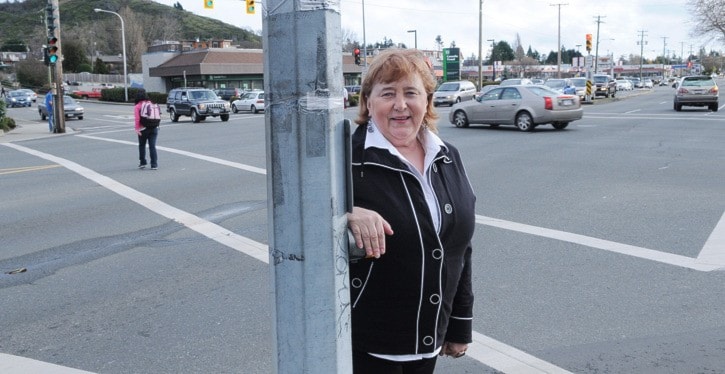The Shelbourne Street corridor won't be getting bike lanes anytime soon.
Traffic on Shelbourne north of Hillside Centre is simply too heavy to knock the road down to three lanes to better accommodate buses, cyclists and pedestrians, according to a consultant report looking at a 25-year plan to revamp one of the major arteries of Saanich.
"We have over 25,000 cars going along Shelbourne south of McKenzie (Avenue) every day, and the transportation modelling shows that if we were to limit the number of lanes on Shelbourne to two or three, that traffic would disperse onto parallel routes, such as Richmond and Cedar Hill," said Saanich community planner Harold Stanley. "And those roads aren't built to handle that kind of traffic."
The report, from Urban Systems, looked at two- and three-lane options on Shelbourne. Stanley noted that it appears a lane reduction would negate any positive benefit from increased public transit along the corridor.
"Reducing the number of lanes from four to three or two would cause enough congestion and delays that it's unlikely that B.C. Transit would follow through on their plans for frequent transit on Shelbourne," Stanley said.
Saanich Coun. Judy Brownoff, somewhat skeptical the transportation modelling, is optimistic that fewer people would drive if dense urban centres planned along Shelbourne were properly executed.
"My feeling of cars is we will always have cars, they always have to be accommodated, but they shouldn't be the priority in the context of moving through a number of neighbourhoods, commercial centres," she said. "Isn't it possible that the volume of traffic will be reduced if you create successful centres where you can live, work, shop, and have an amazing public transit system? My sense is it should."
The consultant's report does look at incorporating wider sidewalks and installing bike lanes along the notoriously pedestrian- and cycling-unfriendly street.
Stanley explained there are a variety of options on the table that include bike lanes and sidewalks that range in width from 1.5 to 3 metres and a buffer from vehicle traffic, by either moving hydro poles or installing utility cabling underground.
Brownoff, who chairs Saanich's bicycle and pedestrian mobility advisory committee, says that the municipal right-of-way along Shelbourne would allow for changes to take place. She wants to see roadway beautification, along with expanded options for walkers and cyclists.
"There's enough right-of-way to keep four lanes and put in bikes lanes and a sidewalk, but that's nothing pretty," she said. "If we're going to improve the quality of life and create these amazing, vibrant neighbourhoods, it's gotta be more than just asphalt and concrete."
For that, Saanich will have to negotiate with property owners for extra width. Brownoff anticipates changes will start to be seen within the next decade.
The next steps in the Shelbourne valley action plan, Stanley said, will be to vet a report on land-use and urban design, then put the options out to the public. He'd like to see open houses begin to be held in late spring or summer.
"Going to the public with the architecture and transportation plans together, as opposed to presenting them individually, will be really key to getting the best feedback from the community," Brownoff said.
For more information on the action plan, visit the Shelbourne Corridor plan page.
kslavin@saanichnews.com
